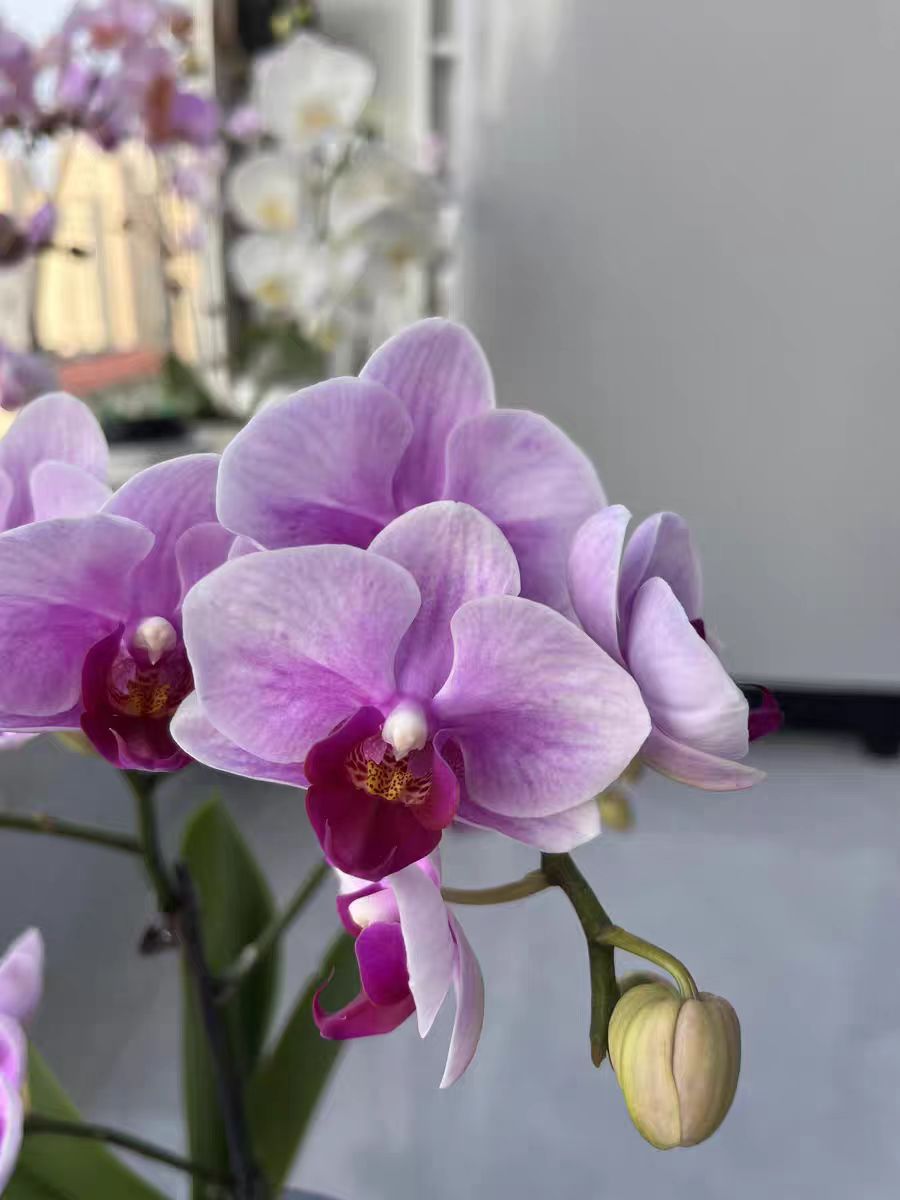Phalaenopsis orchids are popular in home gardening. As the plants grow, timely division and repotting can not only provide more space for their growth but also lead to the propagation of more new plants. However, knowing the proper timing for division and repotting is crucial to ensure the healthy growth of Phalaenopsis orchids.
The best time to divide Phalaenopsis orchids is usually after the flowering period and before a large number of new buds germinate. Phalaenopsis orchids consume a lot of nutrients when they bloom. After the flowering period, the plants enter a short - term dormant recovery stage. Dividing the plants at this time causes the least damage to both the mother plant and the daughter plants. Generally, it is more suitable to divide the plants in March or April every spring, 1 - 2 weeks after the flowers fade. During this stage, the temperature gradually warms up and remains at around 18 - 25°C, which is beneficial for the healing of the plants' wounds and can also prompt the newly divided plants to quickly adapt to the new environment and grow new roots.
In addition to considering the time factor, the growth condition of the plants can also be observed to determine whether Phalaenopsis orchids are suitable for division. When 2 - 3 robust new roots grow at the base of the Phalaenopsis orchid plant, and the length of the new roots reaches 5 - 8 centimeters, and at the same time, the new buds have grown 3 - 4 leaves, the plant meets the conditions for division. Such new plants already have a certain root system and leaves, which enables them to independently absorb nutrients and carry out photosynthesis, resulting in a higher survival rate after division.
Unlike division, repotting Phalaenopsis orchids focuses more on providing the plants with a larger growing space or improving the growing medium environment. The best time for repotting is also in spring, specifically in April or May. At this time, the temperature is stable, and the plants are growing vigorously, so they can adapt to the new pots more quickly after repotting. If the growing medium has been used for 2 - 3 years and shows signs of rotting and compaction, which affect ventilation and drainage, then even if the plants do not appear to be overcrowded, it is necessary to repot them in a timely manner and replace the old growing medium with a new one.
Apart from spring, when Phalaenopsis orchids encounter special situations such as severely damaged roots or root rot caused by pests and diseases, they also need to be repotted in a timely manner. For example, if the leaves of the plant turn yellow and the growth is slow, and blackening and rotting are found on the roots upon inspection, then immediate repotting is required. Clean up the rotted roots, disinfect them, and then repot the plant.
When performing division and repotting operations, it is necessary to make full preparations. Prepare clean and sharp scissors or blades in advance for separating the plants. Prepare flower pots with good air permeability, such as plastic perforated pots or ceramic pots. For the growing medium, a mixed substrate of sphagnum moss, bark, coconut shell, etc. can be selected, which can ensure good drainage and a certain degree of water retention. During the operation, be careful when separating the plants to avoid excessive damage to the roots. After division, apply wood ash or carbendazim powder to the wound for disinfection. When repotting, try to retain some of the old growing medium on the original roots to help the plant adapt to the new environment more quickly.
After division and repotting, Phalaenopsis orchids require special care. Place them in a cool, ventilated environment with sufficient scattered light, and avoid direct sunlight. Newly divided plants should not be watered within a week to prevent wound infection, and then gradually return to normal watering. For repotted plants, after watering once to settle the soil, the watering frequency should also be reduced, and normal maintenance can be resumed after new roots grow.
By grasping the best timing for dividing and repotting Phalaenopsis orchids, combined with the correct operation methods and subsequent care, Phalaenopsis orchids can thrive in a more suitable environment. This is not only beneficial to the health of the plants themselves but also, through division and propagation, can help us obtain more beautiful Phalaenopsis orchids.
When is the right time to divide Phalaenopsis orchids?

Share with
Tagged in :




Leave a Reply